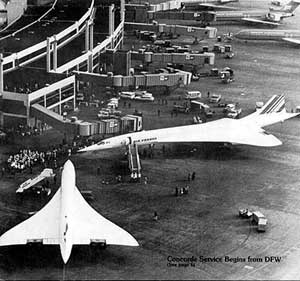On July 25th, 2000, a Concorde, operated as Air France flight 4590, en route from Paris to New York crashed after takeoff from Paris, killing all onboard. (NYCAviation keeps reminding us of things like this).
The crash was caused by a strip of metal that fell from a Continental DC-10 heading to Houston, which punctured one of the Concorde’s tires. The strip was part of an unapproved repair. A piece of rubber hit the plane, fracturing the fuel tank, which ruptured then ignited. The accident also prevented the crew from retracting the landing gear.
The plane crashed into a hotel, killing several on the ground. The accident produced several repairs to the Concorde design, including new tire designs that helped the industry as a whole.
However, the accident, coupled with the post-9/11 downturn, marked the beginning of the end for the Concorde. It had always been a luxury…a glorious luxury which was once-in-a-lifetime for many, and routine for the more affluent. The Concorde ceased operations in 2003, and the remaining Concordes remain in museums.

The Concorde was operated by an American airline for a time. In 1979, Braniff Airlines introduced a service between Texas, Washington DC, and Europe. Braniff crews would fly the planes from Dallas/Ft. Worth to Washington Dulles, where the Air France and British Airways crews would take over. For the duration of the flight, the ownership of the plane was temporarily transferred to Braniff.
The US documentation had to be on the flight deck, and the European documents were stored for the duration in the lavatory. British Airways kept a captain and flight engineer onboard for the flight for insurance purposes.
Ultimately, the Concorde has a magical place in the hearts of aviation enthusiasts and much of the public. But with the U.S. limiting it landing at American airports, and the limited number of seats versus cost, it never lived up to its full dream.
Sixty years before the Concorde, the Titanic and its sister ships were built for the White Star Line to compete with the Cunard Line’s Lusitania and its sister. The Lusitania was faster, the Titanic larger. It was determined that quantity would be more profitable than speed.
Such was the lesson of Concorde as well. A larger plane is slower, but it can fit more high-paying passengers in it.
![Reblog this post [with Zemanta]](http://img.zemanta.com/reblog_e.png?x-id=e0043217-55fb-4af0-9af2-d65cfe05b642)